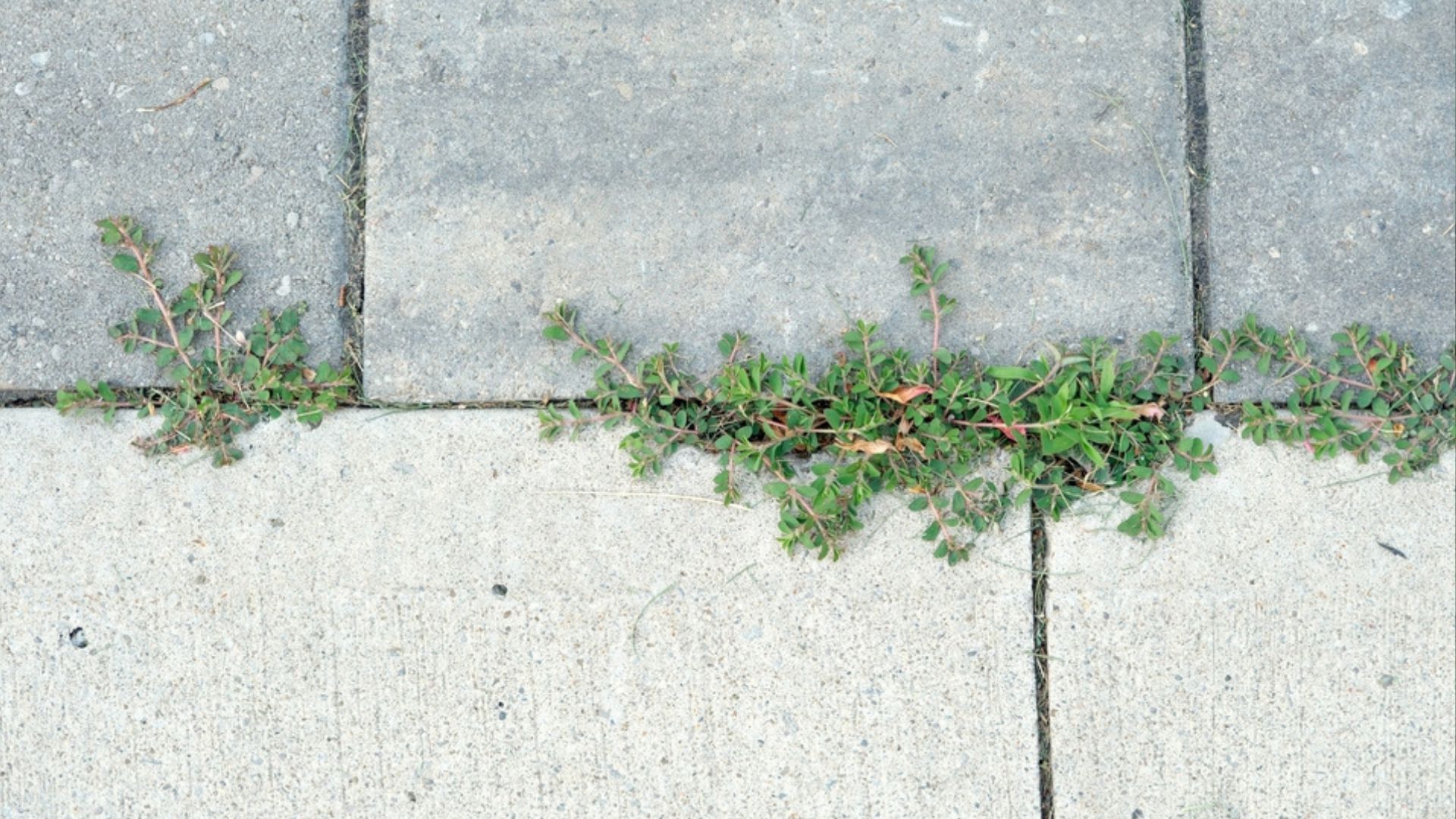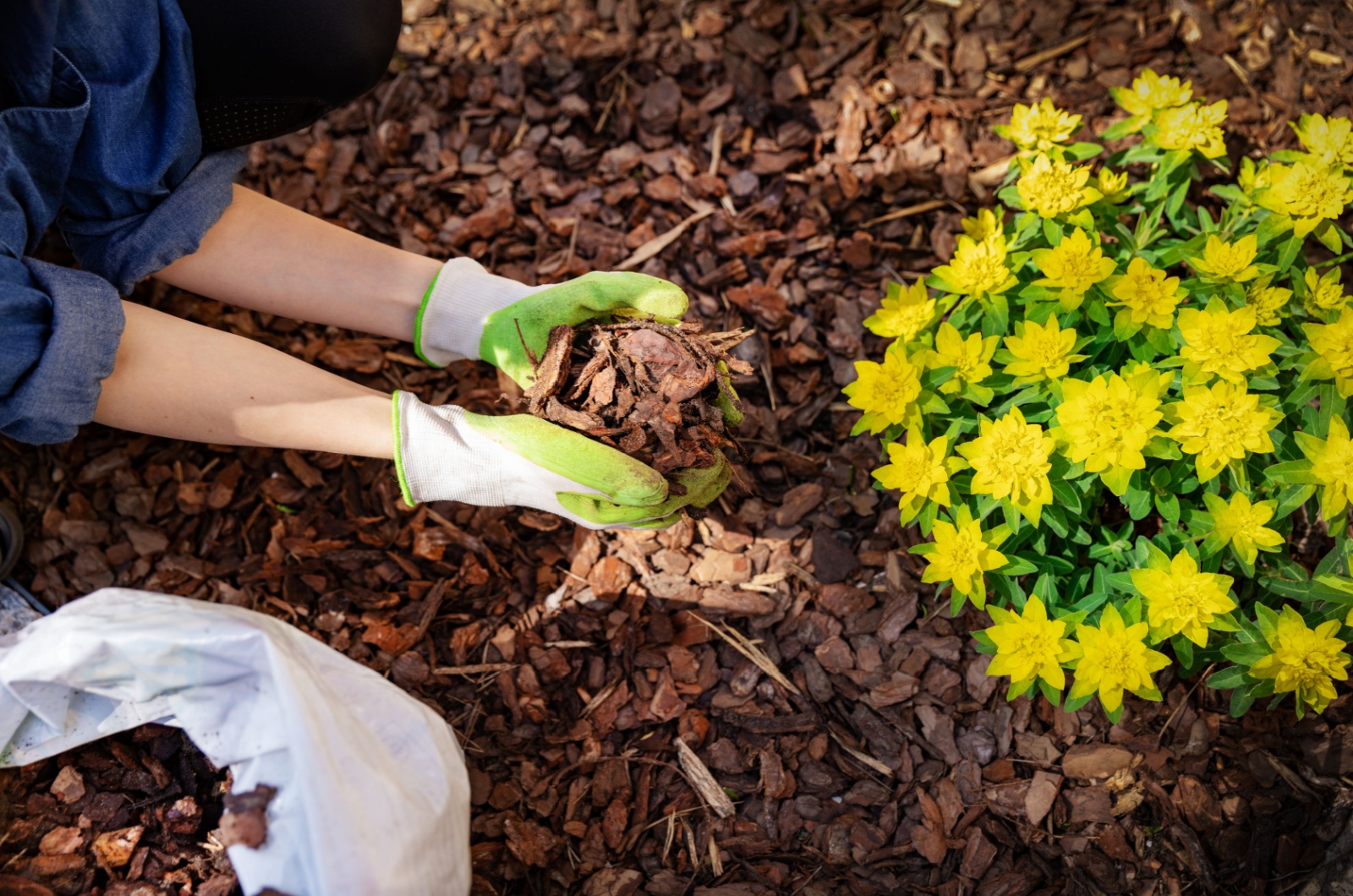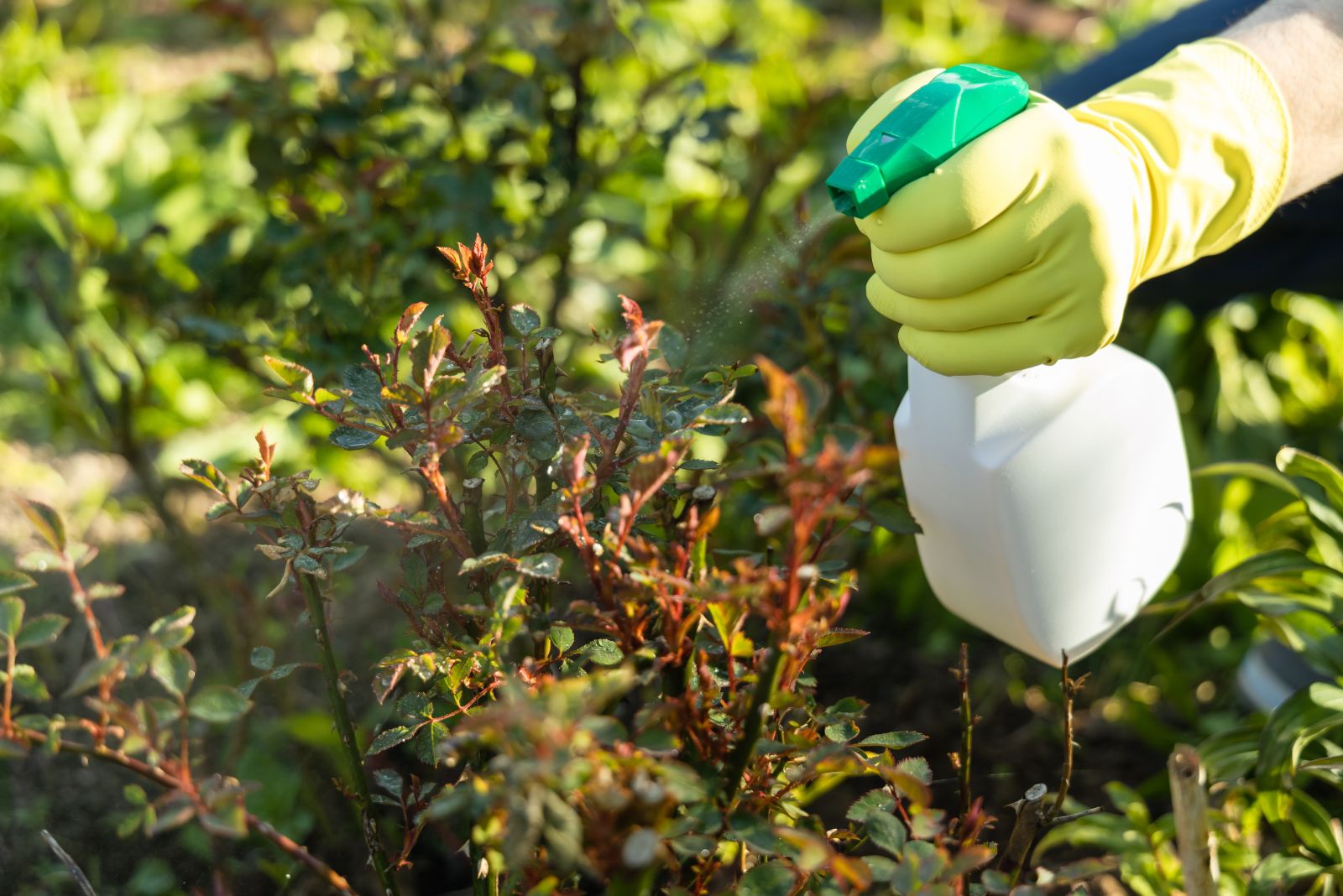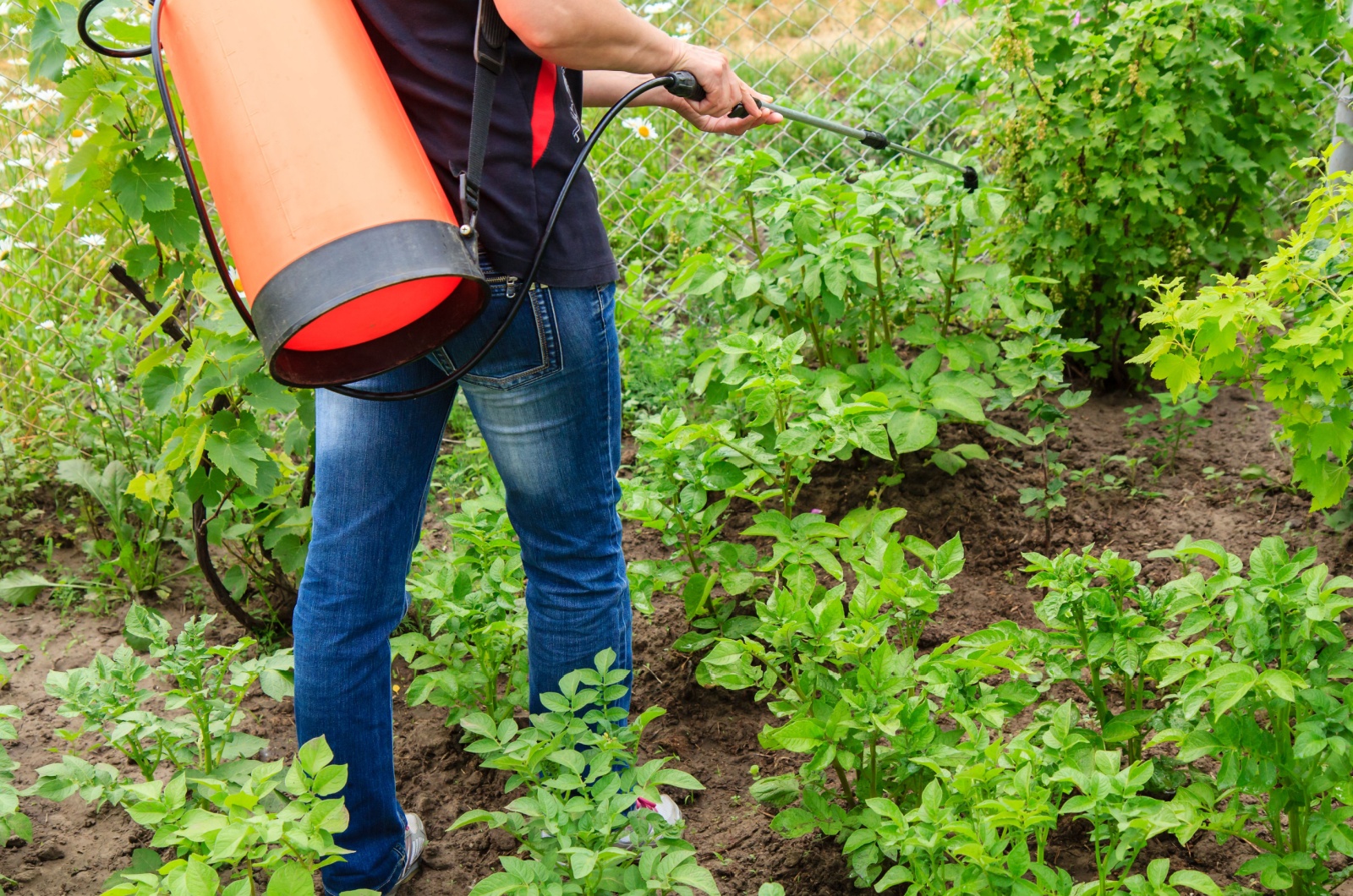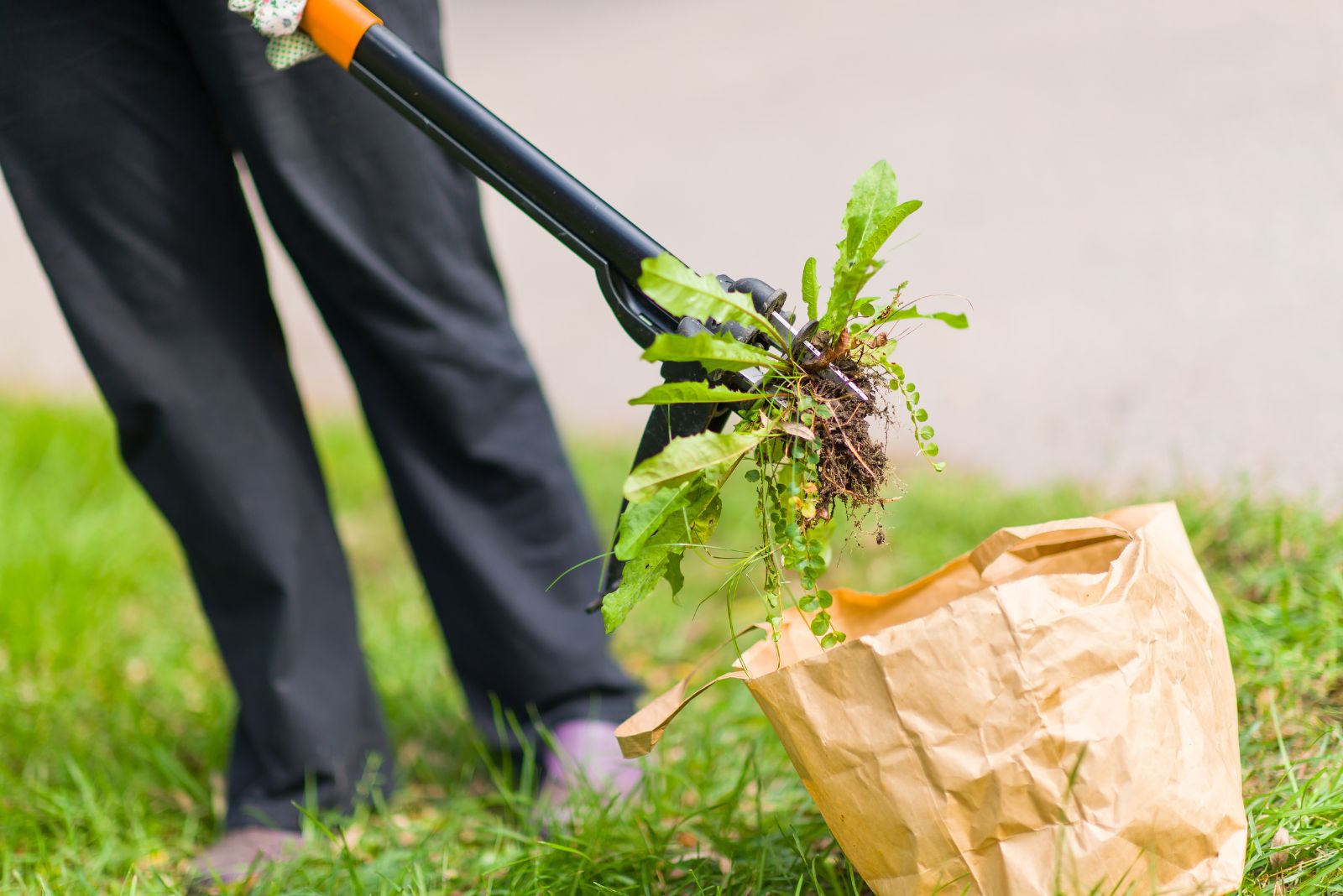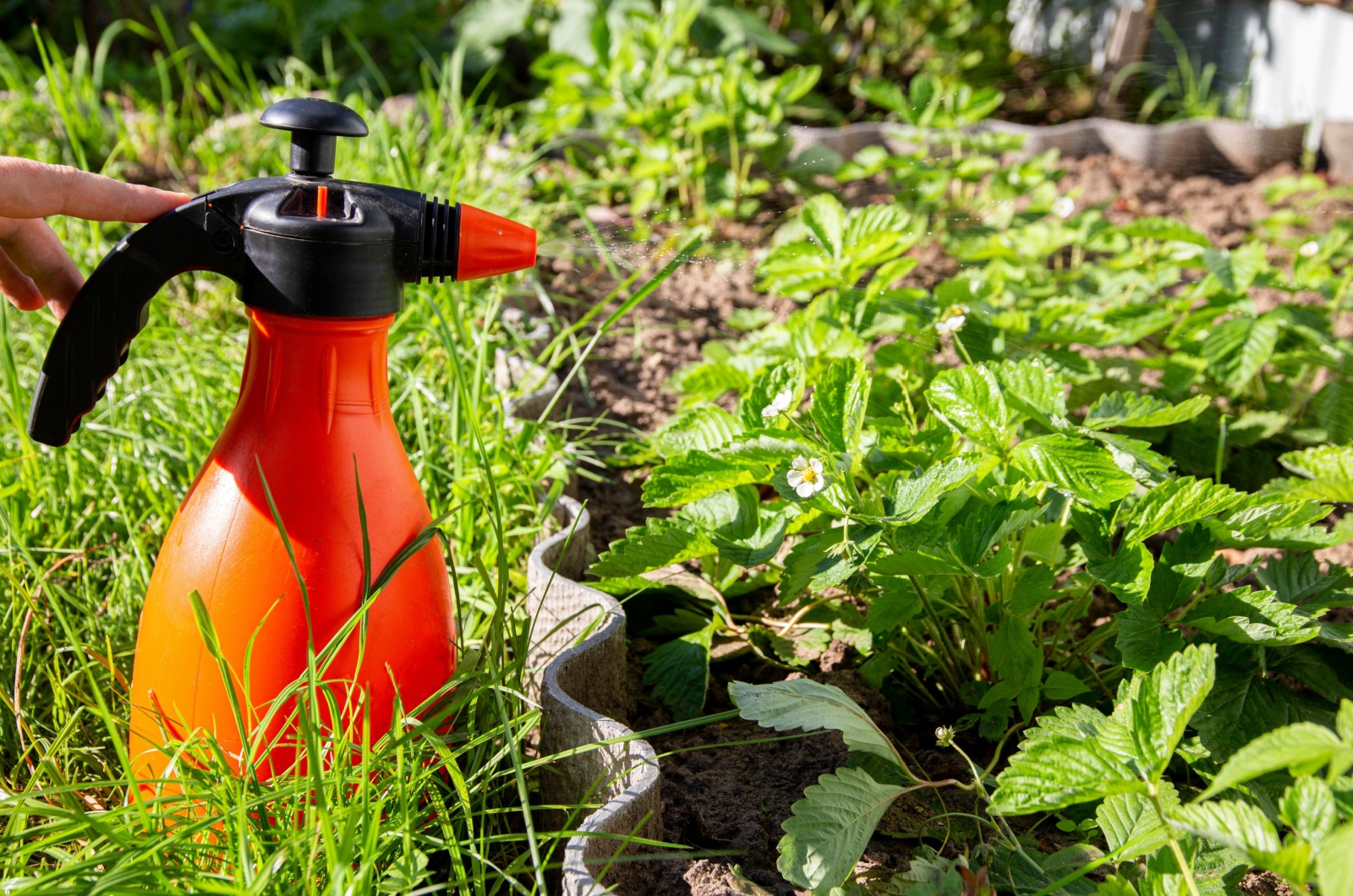Spurge weed… What. A. Headache.
I made the mistake of thinking I could just pull it out and be done, but it spread like crazy. If you’ve tried that too, don’t worry!
The most important thing with spurge is acting fast. When it’s small, you can pull it out by hand since the roots aren’t deep yet. But if you wait too long, it spreads quickly and gets much harder to remove.
Once it flowers, the seeds can stay in your yard for up to eight years, ready to grow again!
So, catch it early, keep pulling it, and stay away from these common mistakes most gardeners make:
1. Not Mulching Your Garden Beds
One mistake I made was not mulching my garden beds. I always thought that I wouldn’t mulch… before I started dealing with weeds. Without mulch, spurge has all the sunlight it needs to grow and take over (talking about not letting the light in).
Luckily, this one’s easy to fix. Just lay down a nice, thick layer of mulch (about 2 inches should do the trick). It doesn’t matter if you use mulch, straw, or compost, it’ll block the sunlight and stop those weed seeds from sprouting.
Keep an eye on things, though. If any spurge sneaks through, pull it out by the roots before it spreads.
Related: Are You Making These Shocking Mulch Mistakes? Find Out What Could Be Ruining Your Garden
2. Unintentionally Harming Your Garden Plants With Herbicides
When using herbicides to destroy spurge, one common mistake is accidentally harming the plants you actually want to keep.
It’s not just about where you spray – those chemicals can drift and affect other areas of your garden (especially if it’s windy or hot out). This is called herbicidal drift, and it’s particularly sneaky with products containing triclopyr or dicamba.
To avoid covering your entire garden with chemicals, be sure to spray on calm days and skip the super hot ones to prevent the chemicals from vaporizing. After applying, give your nearby plants water to help protect them from any herbicide that may have wandered over.
Related: Stop Winter Burweed In Its Tracks With These Proven Tips
3. Not Applying Pre-emergent Herbicides At The Right Time
If you’ve noticed spurge weed in your garden, the first thing you probably thought about was using pre-emergent herbicide. But here’s a classic blunder many gardeners make – applying these herbicides at the wrong time.
As the name suggests, “pre-emergent” means you need to use it before those annoying seeds have a chance to sprout. So, if you’ve already spotted a spurge taking over your yard, you’ve missed this boat (sorry!).
To effectively keep spurge under control, be proactive. If you expect last year’s spurge to return as the weather warms up, apply your pre-emergent herbicide before it appears again.
And don’t forget to read the manufacturer’s instructions carefully – getting the mixing, application, and coverage just right is all it takes to win this weed war.
4. Not Pulling Out The Roots Entirely
When it comes to spurge, simply yanking out the visible parts and calling it a day won’t cut it.
Many folks make the mistake of thinking they’ve got rid of the weed when, in reality, they’ve left behind roots that can sprout new growth in no time.
If you’re going to go the old hand-pulling route, you need to dig deep and remove the entire root system. Remember that even a tiny piece left in the soil can grow in an entire new plant.
But please note that hand-pulling spurge isn’t usually a reliable long-term strategy. It might work in the early stages, but only if you are completely sure that you’ve got every last root.
If you let it grow, it will develop a long, stubborn taproot that’s pretty much impossible to remove by hand. From this point, your only options are herbicides.
5. Using Only Vinegar To Remove Them
You might have heard that vinegar can destroy lots of pesky weeds (with spurge being one of them); however, that is not entirely true. While vinegar has its merits, it’s not a miracle worker for mature spurge infestations.
Relying solely on vinegar to eliminate well-established spurge is a bit like trying to use a squirt gun to put out a fire (it’s just not effective enough).
If you’re determined to give vinegar a shot, focus on the younger spurge plants. Grab a strong herbicidal vinegar that has around 20% acetic acid for the best results.
In a pump sprayer, mix a gallon of vinegar with about a cup of salt and a bit of dish soap. Spray this solution on those young spurge plants and keep an eye on the area over the next few days.
If any spurge weeds try to grow again, reapply the mixture every day or two until they’re completely gone!
Related: Wipe Out Weeds Easily With This No-Fuss Cardboard Box Hack

